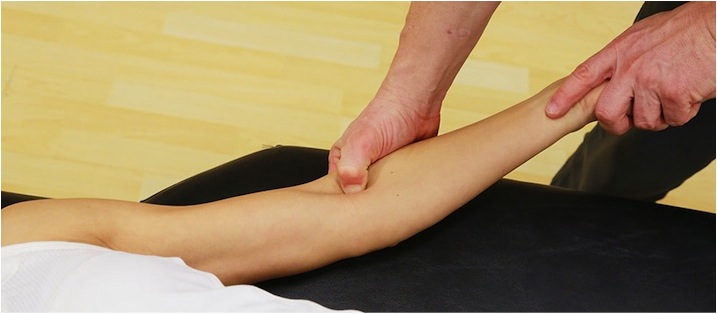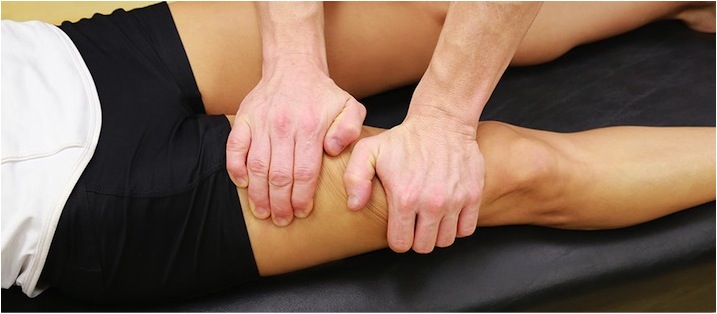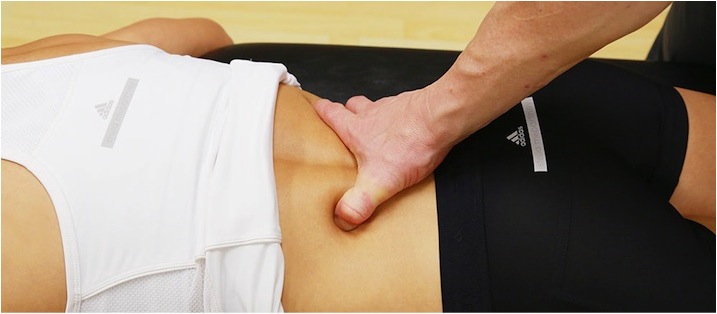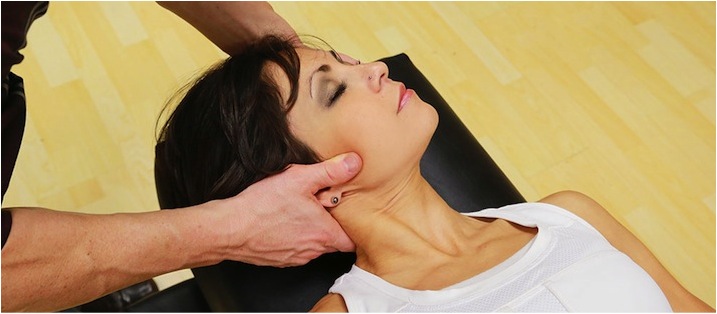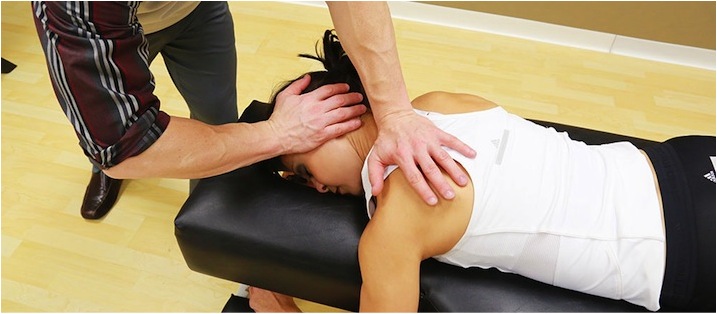Fascial Distortion Model
What is FDM?
Stephen Typaldos, D.O. developed The Fascial Distortion Model (FDM)
The Fascial Distortion Model (FDM), developed by Stephen Typaldos, D.O., is an anatomical perspective in which the underlying etiology of virtually every musculoskeletal injury (and many neurological and medical conditions as well) is considered to be comprised of one or more of six specific pathological alterations of the body's connective tissue (fascial bands, ligaments, tendons, retinacula, etc.).
In the manipulative practice of FDM (known as Typaldos Manual Therapy, or TMT) each injury is evaluated through the model and depending on how the patient presents, using their body language, mechanism of injury and objective findings a meaningful diagnosis is created that has practical applications.
An example of this approach is how a sprained ankle is treated. Conventionally a sprained ankle is rested so torn ligaments can heal, using rest, ice, compression, elevation, ant-inflammatory drugs and crutches. In contrast, when using the FDM approach, the specific anatomical distortions of the capsule, ligaments, or surrounding fascia are physically treated and when using this along with other modalities like kinesiology tape and some rehabilitative exercises, a patient can go from non-weight bearing to walking with minimal pain in just one visit. This approach is by far the most powerful tool I have included into my practice and is therefore central in my approach to dealing with all injuries.
Types of distortions
Triggerbands
Triggerbands are injuries where fibers in banded fascial tissue have become twisted, separated, torn, or wrinkled. Patients often explain triggerbands by describing a burning or pulling pain in certain areas accompanied by a sweeping motion with their fingers. These indicators display the pathways for corrective treatment of the afflicted fascial band, ligament, or tendon.
Triggerbands
Continuum Distortions
Continuum distortions occur when the transition zones between tendons, ligaments, other fascia tissue, and the bones lose their ability to respond correctly to external forces. Patients often point, with one finger, at the site(s) of pain. The diagnosis is clear because the body language is distinct and obvious. A majority of Continuum Distortions are found in acute injuries, but some may be found along with chronic injuries. Ankle sprains, cervical strains, sore shoulders, and sacroiliac pain are a few examples of these exquisitely tender disruptions of the ligament/bone junction.
Continuum Distortion
Cylinder Distortions
Cylinder distortions are tangled coils of circular fascia. They restrict motion by acting as a tourniquet around muscles or other tissues. Think of is if you are wearing a shirt tucked into your pants and then suddenly someone pulls your pants up and to the right, your shirt to the left, rolls up one sleeve and then the other pant leg. This is what is feels like when you have these cylinder distortions. The connective tissues natural ability to uncoil and recoil is restricted by this entangling and the fascia's ability to absorb pulling and pushing forces is lessened greatly when entangled. Cylinder distortions are recognized by the body language of repetitively squeezing the affected area. Patients will mention symptoms that mimic neurological conditions — such as tingling, numbness, and even reflex sympathetic dystrophy.
Cylinder Distortion
Herniated Triggerpoints
Herniated triggerpoints, or HTP’s, are injuries where tissues, that normally lay underneath the fascia, have bulged through the fascia and have become stuck there. Complaints of pain like neck aches, sore shoulders, abdominal pain, and buttock strain are the common product of these injuries.
Herniated Triggerpoints
Folding Distortions
Folding distortions manifest when fascia, in or around a joint, becomes distorted. These are usually brought on by either traction or compression forces (a severe pushing or pulling of the fascia). Folding distortion injuries hurt deep down in the joint. They also lessen the fascia's ability to protect against other pushing or pulling injuries. Folding distortions are broken up into two different subtypes of injuries - unfolding and refolding. Unfolding occurs when a joint experiences a pulling and twisting force. The fascia unfolds, torques, and then refolds contorted. The major ramification of this injury is that fascia isn't allowed to refold completely. Refolding injuries manifest when the fascia becomes jammed or compressed onto itself, preventing it from unfolding completely.
Folding Distortions
Tectonic Fixations
Tectonic fixations are defined as a physiological alteration where the fascial surface has lost its ability to glide naturally. Tectonic fixations are common and widespread because fixated fascial surfaces can occur in any joint in the body. Non-gliding surfaces of a tectonic fixation act like two magnets attracting to each other. As the name of the distortion implies, fascial surfaces stuck to each other are reminiscent of geological plates of the Earth’s crust jammed together.
Tectonic Fixations
What to expect
During your first visit at my office, I will walk you through an in depth clinical assessment. This gives me a chance to survey the current state of your injury or pain and evaluate its cause. This clinical assessment is followed by providing you a clinical diagnosis and explaining how I can help you achieve your optimal health and goals. If FDM is appropriate, we will start with hands-on soft tissue and joint mobilization to help with your healing of the painful areas and their surrounding damaged tissues. In every situation, you are prescribed personalized stretching regiments and exercises. These are important to help keep other injuries from happening and speed up your recovery. Your health is important to me. So, not only do I want the best possible outcomes for you, but I also take your feedback and results to heart.
What is an FDM treatment like?
Since it most likely required a lot of force to cause a fascial distortion, it will require an equally great amount of force to correct the distortion. The FDM approach looks at six different types of fascial distortions that all contain their own distinct form of correction. Experiences of discomfort during treatment should be expected although in most cases the patient is able to acknowledge that the discomfort during treatment 'hurts good'.



